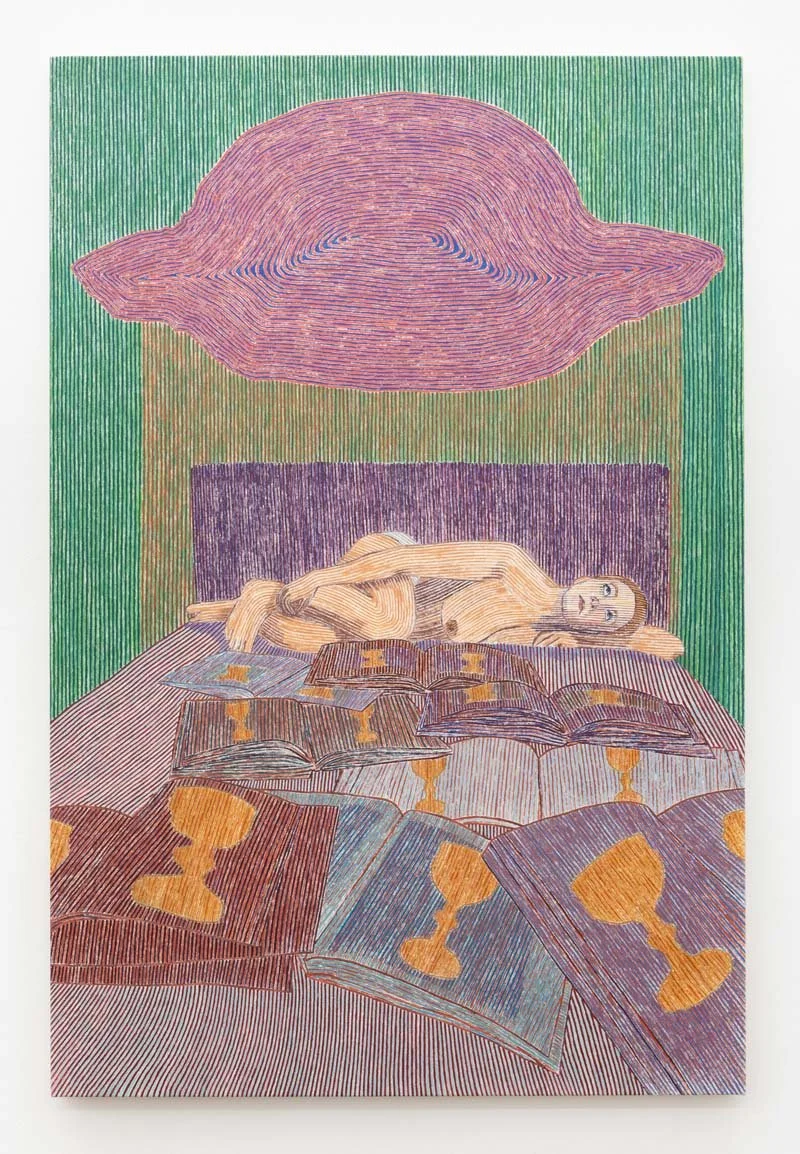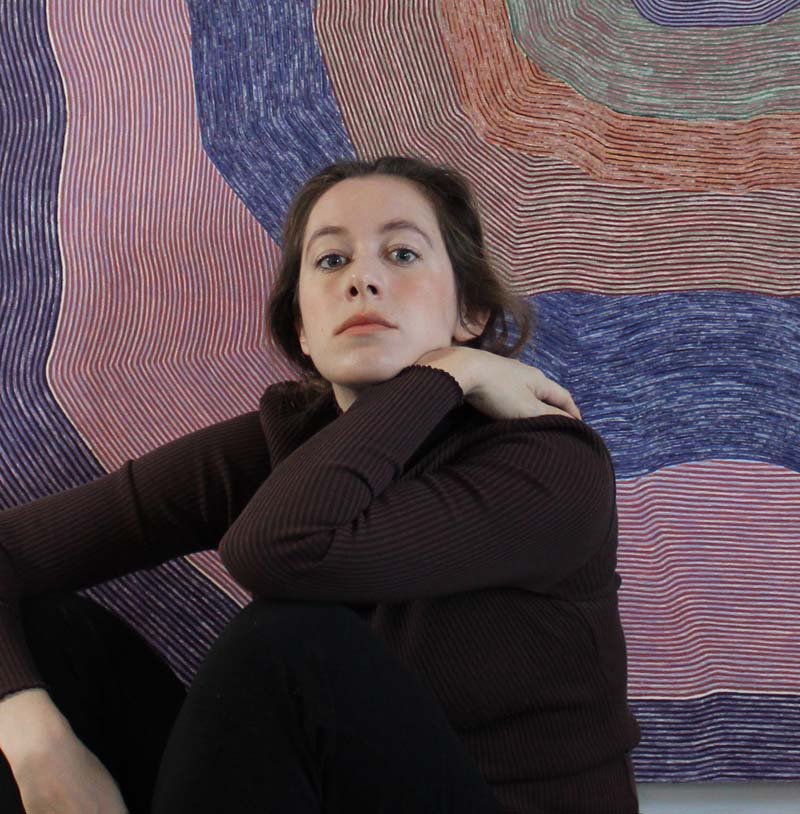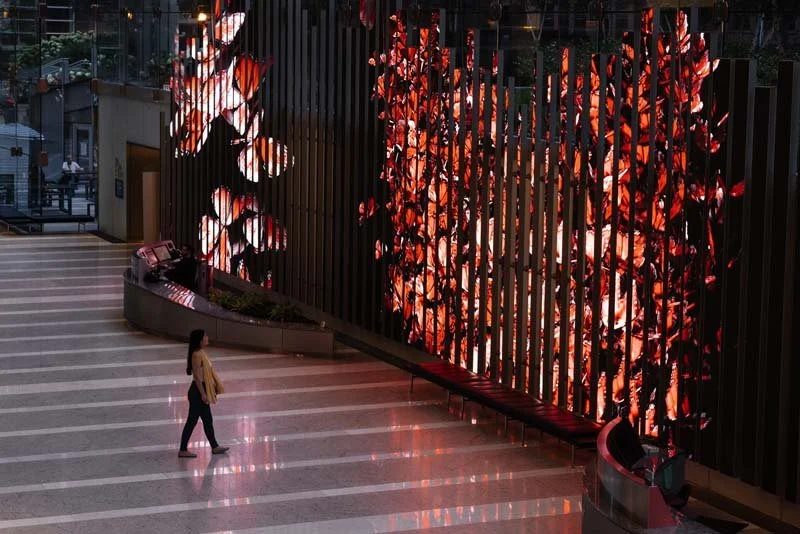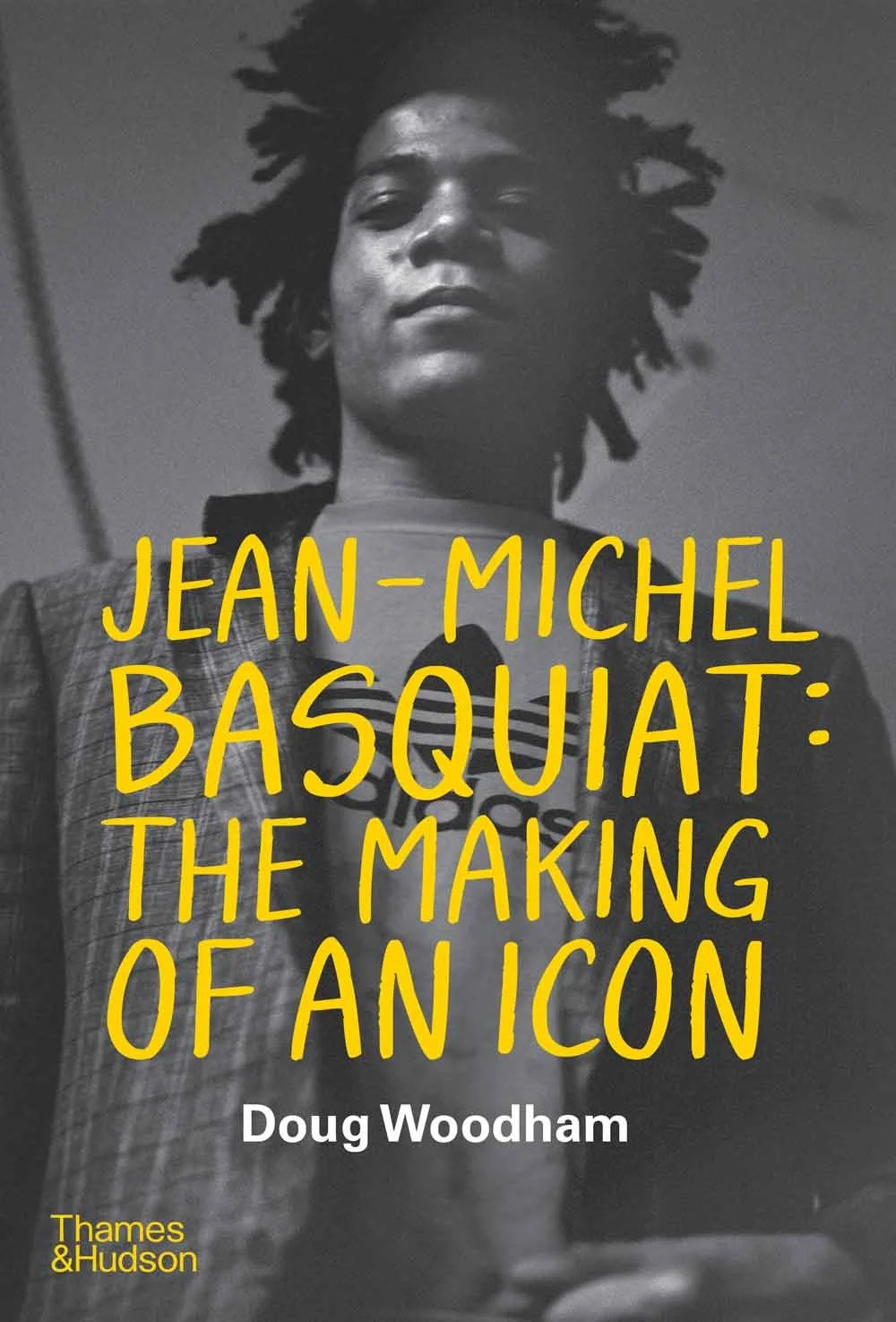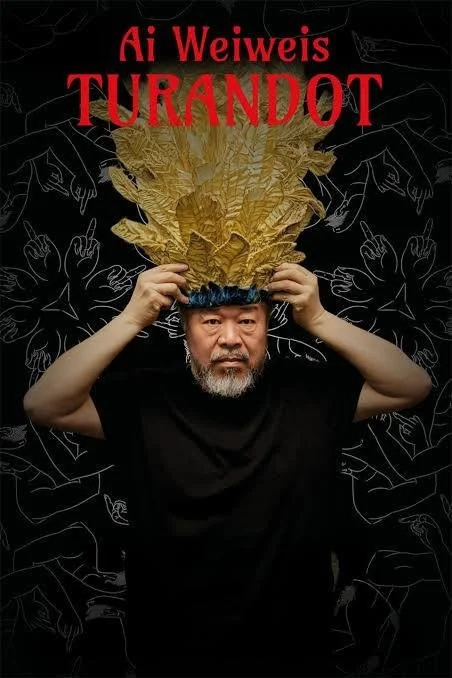Brittany Miller (born 1990), lives and works in New York City. She attended Pratt Munson (2010), received a BFA/MS from Pratt Institute (2013), and an MA from Columbia University (2023). She has had solo exhibitions with T293, Rome (2024); Steve Turner, Los Angeles (2023); and Scott Miller Projects, Birmingham (2022). @brittanyjmiller
How did the cultural landscape of New York shape your creative vision? I was born and raised in Central New York, in the country. I moved to New York City in 2010, and have been here since. I grew up living on a big spread of land, with horses and rabbits and any other animals we collected. I used to jump on a horse and go ride into the woods after school. I used to love to just wander through the trees and build little houses out of branches and rocks and leaves. I also spent a lot of time with my grandparents, who lived on the St. Lawrence River. I swam a lot, and fed the ducks and geese from our dock. These sensory experiences were all really important. There was a lot of beauty around me. I used to spend my time making things--hammering pieces of wood together with scrap nails, carving, writing stories, sewing, drawing on big rolls of paper from my dad's office. Even though I live in a city now, I still spend my time the same way--in nature and making things with my hands. Growing up in the country helped me form a strong connection to the natural world, and I am incredibly grateful for it.
Can you describe the moment you knew you wanted to be an artist? For you, what is the importance of the arts? I don't remember ever not wanting to be an artist. One memory that sticks out, though, is buying a book of optical illusions from a book fair. There were pages of black and white kinetic optical illusions that looked like they were spinning and vibrating on the page. It felt like magic. I thought it was so powerful that images could tell stories, change the way we feel, change the way that we see the world. Images can create revolutions and make people believe in things they didn't think possible. For me, making art is and was compulsive, but I have always wanted to participate in the visual art world in any way possible.
What does your typical day in the studio look like? Walk us through your studio and your most used materials and tools. I usually work every single day. The paintings come together in layers, so I work on one painting at a time, switching between them to let each layer dry. It can take hours to finish a small area, because of the precision of my lines. It's quiet and calm. Figuring out what the painting will look like can take a long time, and happens largely in my head. The actual painting process is very easy and very enjoyable, like quilting or crocheting. The first layer of the painting is made up of lines with white gesso left in between. The next layer of color goes in the white spaces. I continue to build the painting up over time. I have to trust the image in my mind, because I can't see the colors interact on the canvas until all of the white spaces are filled. The lines of colors interact with each other, like in pointillism. I only paint with one very small brush with its bristles cut short. I take a lot of breaks to read or look at images. I have piles of notebooks where I print out and glue pictures of things I like and ideas for the paintings.
What themes are you currently exploring in your art? Right now I'm working on a show called "Primal Sound." The name comes from an essay by Rilke from 1919. In the essay, Rilke is talking about playing with a phonograph and a wax cylinder as a boy. Rilke was entranced by the technology, and became fixated on the idea of running a phonograph needle on the coronal suture of the human skull. He said that this translated sound would be the "primal sound" of humanity. The show is about this exchange between the material and immaterial--like turning the human body into music. My work has always been about this experience of transcending the physical world. In my paintings there are always things to help a person exit--books, angels, portals, UFOs. For the show I'm working on now, caves are the doorways to the spiritual realm. My last show, "Saint Radio" at T293 Gallery, was in part about UFOs. During my research on UFOs, I came across a book called "Heaven Can Wait: Purgatory in Catholic Devotional and Popular Culture" by D.W. Pasulka, about the history of spatial and material concepts of purgatory. Pasulka writes about the period of time when many in the Catholic faith believed purgatory was a real, terrestrial place inside of a cave on an island in Lough Derg, Ireland (St. Patrick's Purgatory). This led me to further research about caves as religious sites in historical records, mythology, and poetry. There are a lot of visual influences in the work as well: Hieronymus Bosch, Hildegard of Bingen, Toyen, Julio Galán.
What do you hope people feel when they experience your art? What are you trying to express? When people look at my paintings, I want them to have something like a religious experience. I want them to experience feelings of safety, of renewal. I want to baptize.
If you could time travel to any artist’s studio, whose would it be and what would you hope to witness? It's hard for me to choose artists I'd like to spend time with, because I truly find everyone fascinating. I'm most curious about Hilma af Klint and Agnes Martin as thinkers. I want to meet all of the Saints--those who have levitated, received messages, raised the dead.
Do you draw inspiration from music, art, or other disciplines? Poetry has always been an important part of my practice. The first book that I remember buying with my own money was Adrienne Rich's collection, "The Fact of a Doorframe: Poems 1950-2001." I highlighted almost every page and wrote in the margins. I have made paintings about poems, and I have made paintings of poets. I have painted Marie Howe, John Yau, Tawanda Mulalu, Jameson Fitzpatrick, Robert Wood Lynn, Courtney Bush, and Jack Underwood, among others. Poetry feels like painting to me in many ways. A poem or a painting is often someone saying, I experienced this astonishing thing (something beautiful, something terrifying, something indescribable), and I want you to experience it too. Poems and paintings leave open spaces for the viewer and reader to move around in. Like myths, they connect us to the mystery, the unseen reality.
A great thing about living in New York City is…
New York City is the best city in the world. It's so exciting that I get to see so much art from so many people, and that I get to be part of all of it. It's beautiful. I love getting see my friends play their music, read their poetry, act in plays. I love my neighborhood, too--it's next to a large park with hiking trails and a pond.
Can you describe a project that challenged you creatively or emotionally—and how you worked through it? The project that has most challenged me is the project of life. How do I take care of myself, how do I take care of others?
Tell us about important teachers or mentors in your life.
I taught young children for many years, and I learned the most from spending my days with them. They were naturally oriented towards the things that are important--the natural world, language, color. They wanted to know why were are here, and how we can help each other. They understood how to be in a community.
Sustainability in the art world is an important issue. Can you share a memory or reflection about the beauty and wonder of the natural world? How has your relationship with nature shaped your creative vision? One of my favorite writers is Thomas Berry, a Catholic priest, cultural historian, and theologian who talks about humanity's relationship to the Earth. I too believe that the Earth is sacred. We have become alienated from the natural world, and we need to find our way back into connection. I hope for Berry's vision of the future that he called the "Ecozoic Era," when humans will return to an intimate relationship with the Earth, and live in harmony with it. When we aren't in connection with the Earth, we are lost. The paintings that I'm working on now are about this rejoining.
AI is changing everything - the way we see the world, creativity, art, our ideas of beauty and the way we communicate with each other and our imaginations. What concerns or hopes do you have about AI in the art world? What is the importance of human art and handmade creative works over industrialized creative practices? There are many, many ways that technology has made our lives easier and better. There are things that will always have value, though. The sensory experiences of interacting with physical objects will always be meaningful. We need to build our own writing voice over our lifetimes by thinking through written language. We need to make art with our own hands to share our inner experiences with the world. We should understand how our clothes are made, how are food is grown, and how our homes are built. Teaching young children helped me to stay in this mindset. In my classroom, we made our own tempera with egg yolk and pigment. We made our own paper and sewed the bindings of our own books. We mixed tempera palettes using the colors of picked leaves and flowers, or plums from our lunches. We crafted paintbrushes out of sticks and ferns. I believe using our hands to make things is part of our spiritual health.
Exploring ideas, art and the creative process connects me to… everything that ever was and that ever will be.







